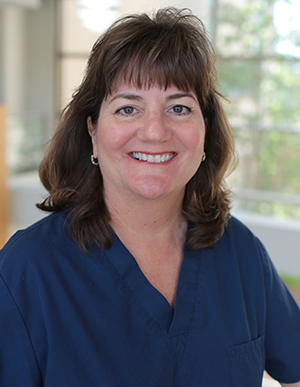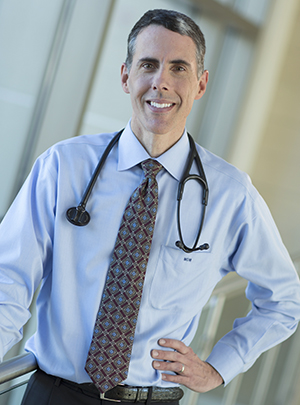Lung cancer screening detects the disease early, improves survival chances
Cancer
Lung cancer kills more people than any other cancer each year
Cancer screening is a vital technology in detecting disease early. We know that women over 40 are advised to get yearly mammograms, and men over 50 should have annual prostate checks.
For heavy, longtime smokers annual CT scans for lung cancer are extremely important. That’s because lung cancer is the leading cause of cancer death among both men and women, according to the American Cancer Society. About one out of four cancer deaths are from lung cancer. Each year, more people die of lung cancer than of colon, breast and prostate cancers combined.

Most lung cancers are detected when symptoms start to occur, says Beverly Weaver, RN, nurse navigator with St. Joseph’s/Candler. Symptoms include coughing up blood, sudden shortness of breath or coughing differently than normal.
That is usually too late. By the time lung cancer is diagnosed, the disease has often already spread outside the lung. In fact, three out of four patients diagnosed with lung cancer are diagnosed late, at stages III or IV, where life expectancy is very low, Weaver says.
“Lung cancer is very deadly,” says Weaver. “Patients diagnosed with late stage lung cancer have an overall five year survival rate of about one out of six.”
Detecting lung cancer early through CT scans
Lung cancer screening is a way for doctors to check for early signs of lung cancer in people who are heavy smokers but show no signs of the disease. Lung cancer screening is offered at St. Joseph’s/Candler through its Lung Cancer Screening Program, which began about a year and a half ago.
A CT, or CAT, scan is a computerized image of the body using X-rays and a computer. A CT scan for lung cancer is similar to a regular CT scan but uses a lower dose of radiation to try to minimize exposure to the patient, says Dr. M. Douglas Mullins, pulmonologist with Southeast Lung Associates and Co-Chair of the Thoracic Multidisciplinary Team at the Nancy N. and J.C. Lewis Cancer & Research Pavilion.
By using a CT scan for lung cancer screening, doctors can see fine detail in the lungs so that small tumors can be identified before they become dangerous, Dr. Mullins says. As a result, lung cancer may be detected earlier, before symptoms appear, and when it is often the most treatable.
“The old fashioned approach of getting a yearly chest X-ray is not effective and is no longer considered adequate for cancer screening,” Dr. Mullins says.

The National Cancer Institute recently conducted a lung screening study which included more than 50,000 high-risk patients. Results showed that annual lung CT screening can detect lung cancer sooner and can reduce death rates from lung cancer by 20 percent in high-risk smokers older than 55 years.
The screening may not be helpful for all smokers. Those who may benefit from an annual CT lung cancer screening include:
- Those 50 and older
- Smoked cigarettes for more than 20 years
- Current smoker or quit less than 15 years ago
- Family history of lung cancer in a first-degree relative (parent or sibling)
- Exposure to radon or contact with other cancer-causing agents (asbestos, chromium, arsenic, soot, nickel, coal smoke or diesel fumes)
St. Joseph’s/Candler follows the Centers for Medicare & Medicaid Services’ requirements in order to be screened. That criteria is:
- You must be 50 to 80 years old
- Showing no signs or symptoms of lung cancer
- At least a 20 pack-year smoking history (one pack a day for 20 years or half a pack a day for 40 years, for example)
- Currently a smoker or have quit within the past 15 years
“Lung cancer screening saves lives,” Dr. Mullins says. “If you are a current or former smoker, talk to your doctor about whether you are a candidate for lung cancer screening.”
Since St. Joseph’s/Candler began the Lung Cancer Screening Program in 2016, more than 500 screenings have been done. If criteria are met and a doctor’s order is given, patients can be screened for lung cancer at one of four places:
- St. Joseph’s Hospital, 11705 Mercy Blvd., Savannah
- Candler Hospital, 5353 Reynolds Street, Savannah
- SJ/C Imaging Center – Pooler, 105 Grand Central Blvd., Suite 106, Pooler
- SJ/C Imaging Center – Bluffton, 10A Oak Forest Road, Bluffton, SC
Screening is recommended every year, and a patient must have an order from a doctor each time in order to be screened. Medicare and most government insurance programs cover the screening; however, if you have private insurance, check with your provider to learn more about the cost.
“I think it’s a great screening tool,” Weaver says. “There are a lot more early stage diagnoses. We want people to be survivors.”
For more information on screening, visit our website or call 912-819-7054.
Stop smoking now to decrease your chances of lung cancer
The most important risk factor for lung cancer is smoking, which causes about 85 percent, or six out of seven, of all lung cancer cases in the United States. If you are a smoker, you should stop now. Just 10 years after quitting, the risk of dying from lung cancer is about half of that of a person who still smokes. Plus, there are numerous other health benefits to stop smoking.
Need help quitting smoking? Consider our Comprehensive Tobacco Cessation Program. Learn more about it here.
Related Article: The two things you need to do to stop smoking